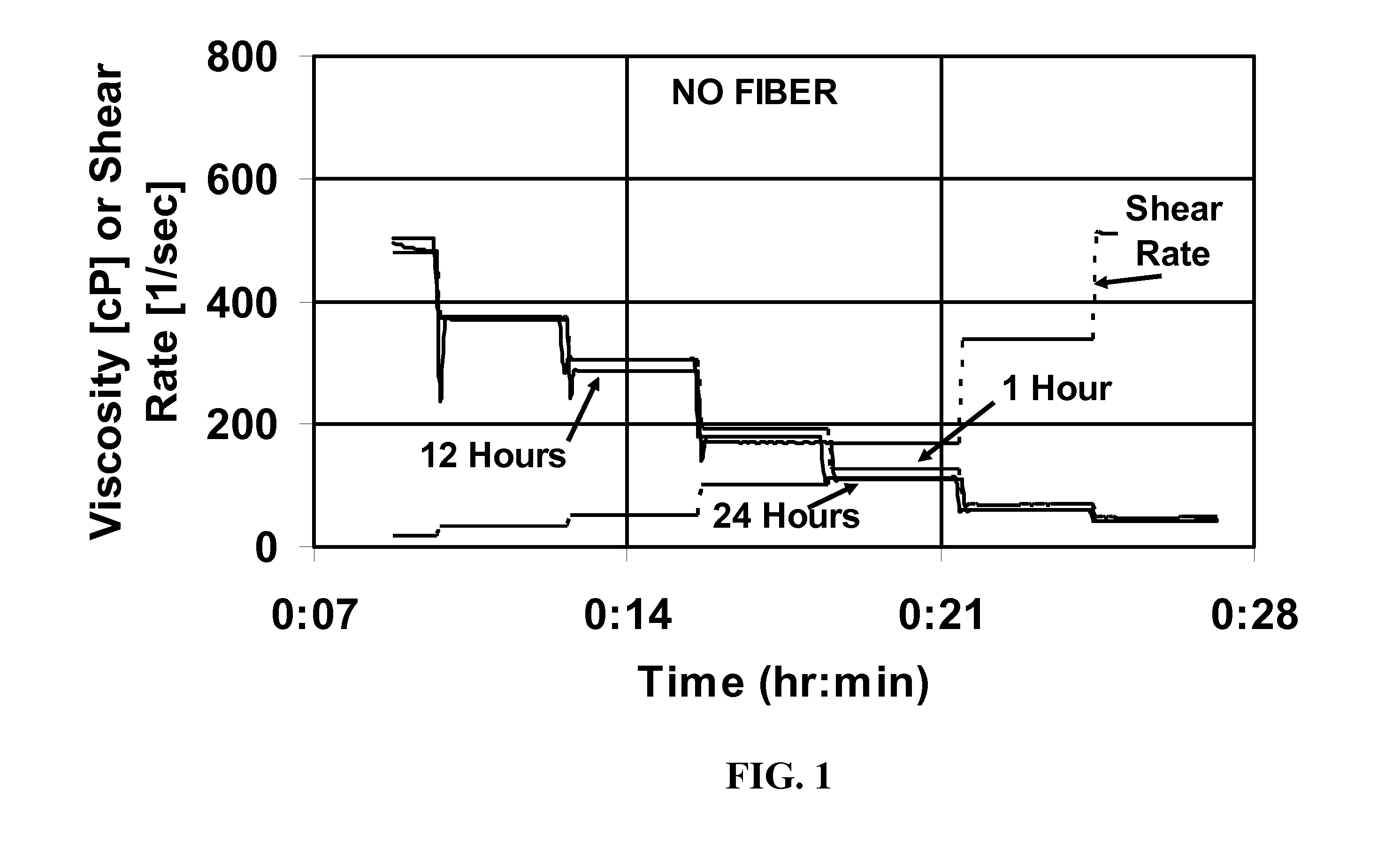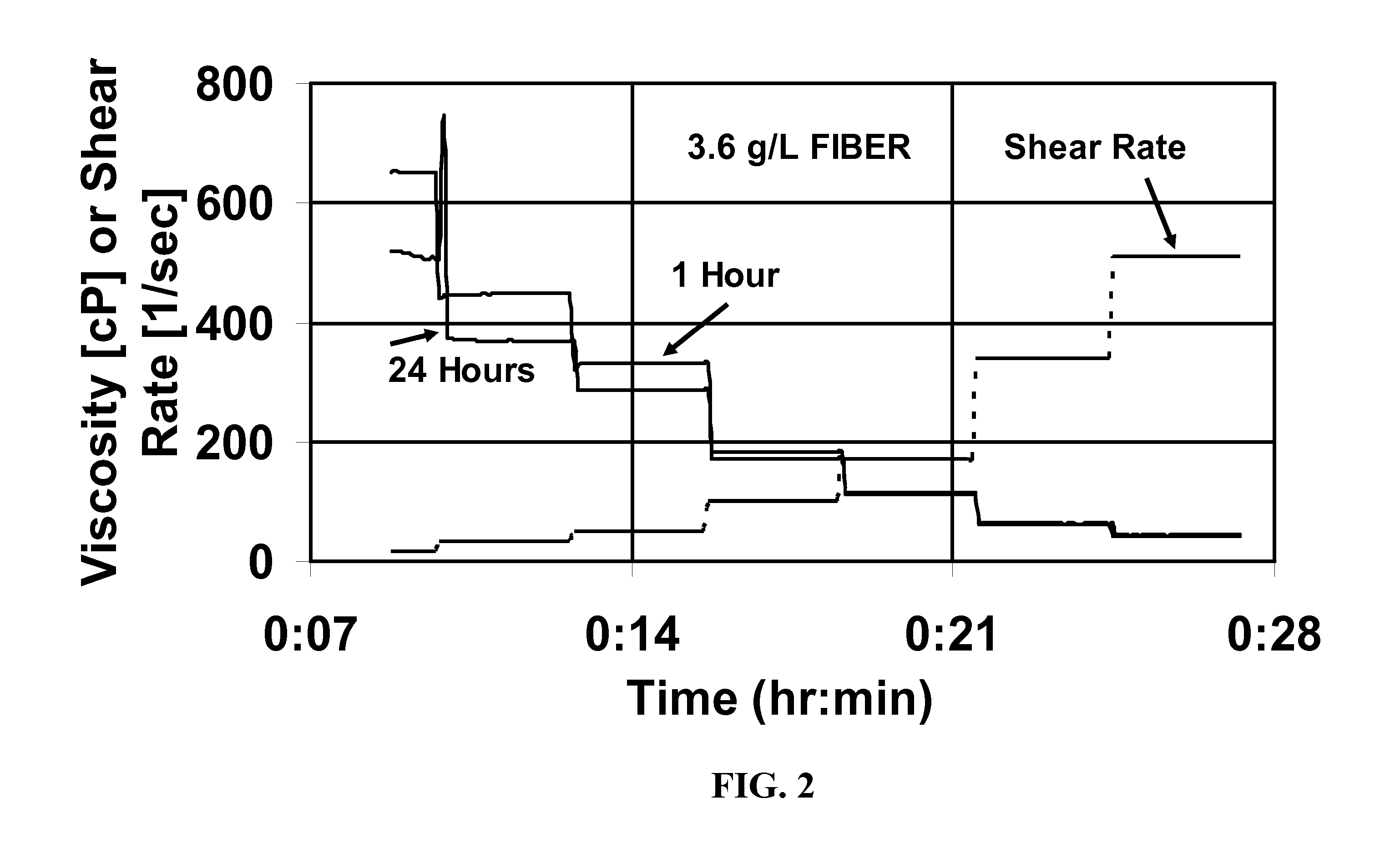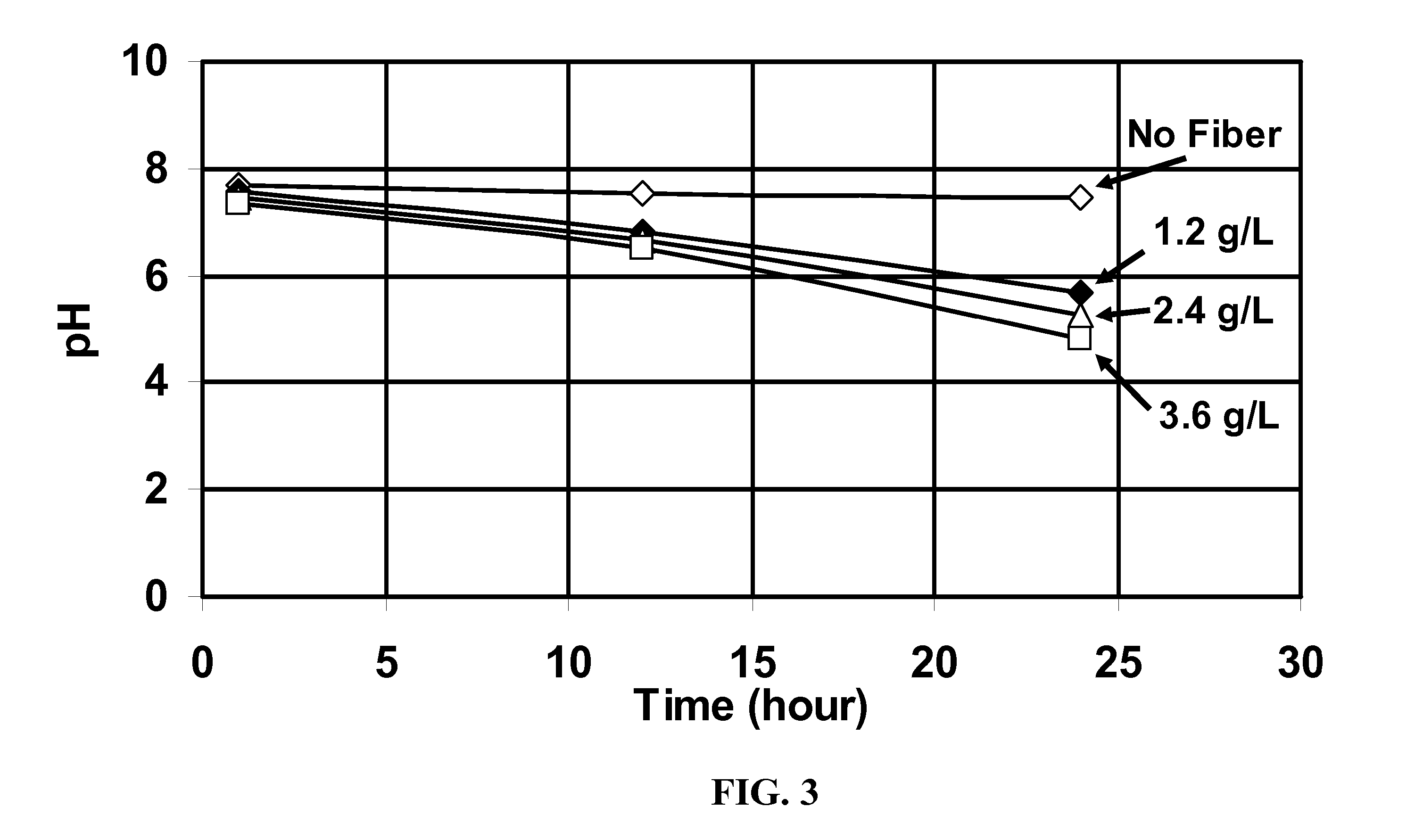Self-Cleaning Well Control Fluid
a well control fluid and self-cleaning technology, applied in the direction of fluid removal, wellbore/well accessories, chemistry apparatus and processes, etc., can solve the problems of not being able to remove all of the fluid or all of the solids, and affecting the operation of the well
- Summary
- Abstract
- Description
- Claims
- Application Information
AI Technical Summary
Benefits of technology
Problems solved by technology
Method used
Image
Examples
example 1
[0045] Experiments were run using a viscoelastic surfactant concentrate containing about 38% by weight erucic amidopropyl dimethyl betaine, about 23% isopropanol, about 5% sodium chloride, about 1% sodium naphthalene sulfonate, and the remainder water. As an example of a decomposable first solid, polylactic acid fibers were used. The fibers contained 12% water and 1% sizing. They had a denier of about 1.4 and were about 6 mm long.
[0046]FIG. 1 shows the viscosity at various shear rates of a fluid made by adding 8 weight % of this surfactant concentrate to water, and then maintaining the fluid at 93° C. for up to one day. FIG. 2 shows a similar experiment, except that 3.6 g / L of the fiber was added. It can be seen that in these experiments, the fiber had very little effect on the viscosity at shear rates from 17 to 511 sec−1 and at times from 1 to 24 hours. This system would be stable for well control at this temperature fort at least one day. The fiber was visible in the system at t...
example 2
[0047] Additional experiments were run with 1.2 g / L fiber and 2.4 g / L fiber. FIG. 3 shows the pH as a function of time at 93° C. for the four runs. The pH steadily decreased with time when the fiber was present, and the more fiber, the greater the decrease. This shows that the polylactic acid was very slowly decomposing, and if the experiments had been continued, the gels would have broken, because it is known that these gels are broken (and the hydrolysis of the surfactants accelerated) by strong acid or by the addition of sufficient organic acid.
example 3
[0048] A fluid was made by adding 4% of the same surfactant concentrate used above, 7% KCl, varying amounts of solid sodium carbonate, 1.1 g (3.6 g / L) of the same fiber as used above, and a 2.5 cm (1 inch) long solid fiber plug (made from the same fiber), to 300 ml water. The physical appearances of the solid fiber plug and fluid were then monitored over time. FIG. 4 shows the days to 100% disappearance of the solid fiber plug at different initial solid sodium carbonate contents. It can be seen that the degradation of decomposable first solid (solid fiber material in plug form in this case) can be controlled this way over the range of from 1 to 10 days. FIG. 5 shows the same data as FIG. 4 but expressed as the days the plug survived vs. the initial amount of solid sodium carbonate present. The final pH in these fluids ranged from about 9.8 (with high initial solid sodium carbonate) to about 8.7 (with low initial solid sodium carbonate).
PUM
| Property | Measurement | Unit |
|---|---|---|
| viscosity | aaaaa | aaaaa |
| viscosity | aaaaa | aaaaa |
| melting point | aaaaa | aaaaa |
Abstract
Description
Claims
Application Information
 Login to View More
Login to View More - R&D
- Intellectual Property
- Life Sciences
- Materials
- Tech Scout
- Unparalleled Data Quality
- Higher Quality Content
- 60% Fewer Hallucinations
Browse by: Latest US Patents, China's latest patents, Technical Efficacy Thesaurus, Application Domain, Technology Topic, Popular Technical Reports.
© 2025 PatSnap. All rights reserved.Legal|Privacy policy|Modern Slavery Act Transparency Statement|Sitemap|About US| Contact US: help@patsnap.com



